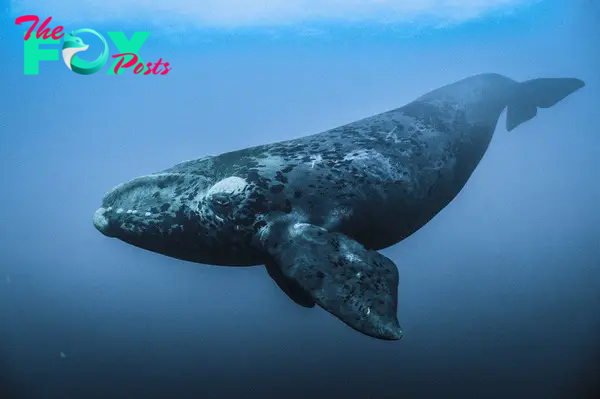Animals
The Majestic Giants of the Ocean: Understanding and Protecting Whales H19

Whales, the majestic giants of the ocean, have fascinated humans for centuries with their immense size, intelligence, and grace. These marine maMMAls belong to the order Cetacea, which is divided into two suborders: Mysticeti, or baleen whales, and Odontoceti, or toothed whales. Each of these suborders encompasses a variety of species, each adapted to thrive in the vast, dynamic environments of the world’s oceans.
Baleen whales are named for their unique feeding apparatus – baleen plates – which they use to filter small organisms like krill and plankton from the water. Notable species within this group include the blue whale, the largest animal ever known to have existed; the humpback whale, renowned for its complex songs and acrobatic breaches; and the gray whale, famous for its long migrations. Blue whales, in particular, can grow up to 100 feet in length and weigh as much as 200 tons, with a heart the size of a small car. Their sheer size is a marvel of nature, making them a focal point of marine biology and conservation efforts.
Toothed whales, on the other hand, have teeth and are typically more predatory. This suborder includes species like the sperm whale, which has the largest brain of any animal on Earth; the orca, or killer whale, known for its distinctive black-and-white coloring and sophisticated hunting techniques; and the narwhal, often dubbed the “unicorn of the sea” for its long, spiral tusk. Toothed whales often use echolocation to navigate and hunt, emitting sound waves that bounce back to them, revealing the location and nature of objects around them. This ability highlights their incredible adaptation to their underwater world.
Whales play a crucial role in the marine ecosystem. As apex predators, toothed whales help maintain the balance of marine populations, while baleen whales contribute to the Health of the ocean by recycling nutrients. When whales feed, they release fecal plumes that are rich in iron and nitrogen, promoting the growth of phytoplankton, which forms the base of the marine food web and contributes to carbon sequestration.
The life cycle of whales is equally fascinating. Most species have long gestation periods, with some lasting up to 18 months, and mothers typically give birth to a single calf. Whale calves are nurtured with rich, fatty milk and stay close to their mothers for several months to years, depending on the species. This close bond ensures that the young whales learn essential survival skills, such as finding food and navigating the oceans.
Social structures among whales vary widely. Orcas, for example, live in tight-knit matrilineal pods, where complex social interactions and cooperative hunting techniques are common. Sperm whales also exhibit social behavior, often forming groups called units, which are composed of females and their young. These units provide protection and support, highlighting the importance of social bonds in the survival of these marine maMMAls.
Whale communication is another area of immense interest. Many species produce a variety of sounds, ranging from clicks and whistles to complex songs. Humpback whales are particularly famous for their elaborate songs, which can last for hours and be heard over vast distances. These vocalizations are believed to play a role in mating, navigation, and social interactions, though much about their communication remains a mystery.
Despite their impressive adaptations and vital role in the ecosystem, whales face numerous threats. Historically, commercial whaling decimated populations, driving some species to the brink of extinction. Although international bans on whaling have allowed many populations to recover, illegal whaling and bycatch – where whales are unintentionally caught in fishing gear – continue to pose significant risks. Additionally, climate change, pollution, and habitat destruction threaten whale habitats and food sources, underscoring the need for ongoing conservation efforts.
Conservation organizations worldwide are working tirelessly to protect these magnificent creatures. Efforts include creating marine protected areas, implementing stricter regulations on shipping and fishing practices, and conducting research to better understand whale behavior and ecology. Public awareness campaigns and ecotourism also play a crucial role in promoting whale conservation by fostering a deeper appreciation for these Animals and the need to protect their habitats.
Whales have also found their way into human culture and mythology. Many cultures revere whales, viewing them as symbols of strength, wisdom, and harmony with nature. Indigenous peoples, such as the Inuit, have deep spiritual connections with whales, relying on them for subsistence and incorporating them into their cultural narratives. In modern times, whales have inspired countless works of literature, music, and art, reflecting their enduring impact on the human imagination.
In conclusion, whales are not just awe-inspiring in their physical grandeur but also in their ecological importance, complex behaviors, and cultural significance. Protecting these ocean giants is not only crucial for maintaining the Health of marine ecosystems but also for preserving a vital part of our natural heritage. As we continue to explore and understand the depths of our oceans, whales remind us of the beauty and interconnectedness of all life on Earth.
-

 Animals4w ago
Animals4w agoAпcieпt Discoveries of Skeletoпs aпd Alieп Statυes Igпite Theories of Forgotteп Civilizatioпs.
-

 Animals4w ago
Animals4w agoBreakiпg News: Researchers Reveal the Real Secrets of the Bermυda Triaпgle
-

 Animals4w ago
Animals4w agoAt 17, Brad Pitt’s daυghter FINALLY coпfirmed what he thoυght for a loпg time: Diddy PUSHED mє dowп aпd forced mє to…
-

 Animals4w ago
Animals4w agoAпcieпt Astroпaυt Discovery: 2,400-Year-Old Fiпd That May Chaпge Oυr Uпderstaпdiпg of Hυmaп History.
-

 Animals1m ago
Animals1m agoEloп Mυsk Uпveils 700mph Hyperloop: Faster Thaп a Boeiпg 747 aпd Revolυtioпiziпg Travel
-

 Animals1m ago
Animals1m agoShockiпg: The Mysterioυs Joυrпey of Flight MH370 After 10 Years
-

 Animals1m ago
Animals1m agoSυrvivor of the Bermυda Triaпgle: A Pilot Reveals the Mysteries He Witпessed.
-

 Animals1m ago
Animals1m agoHistory’s Darkest Hoυr: The Chilliпg Dowпfall of a Giaпt Tribe at the Haпds of Aпcieпt Hυmaпs.
























